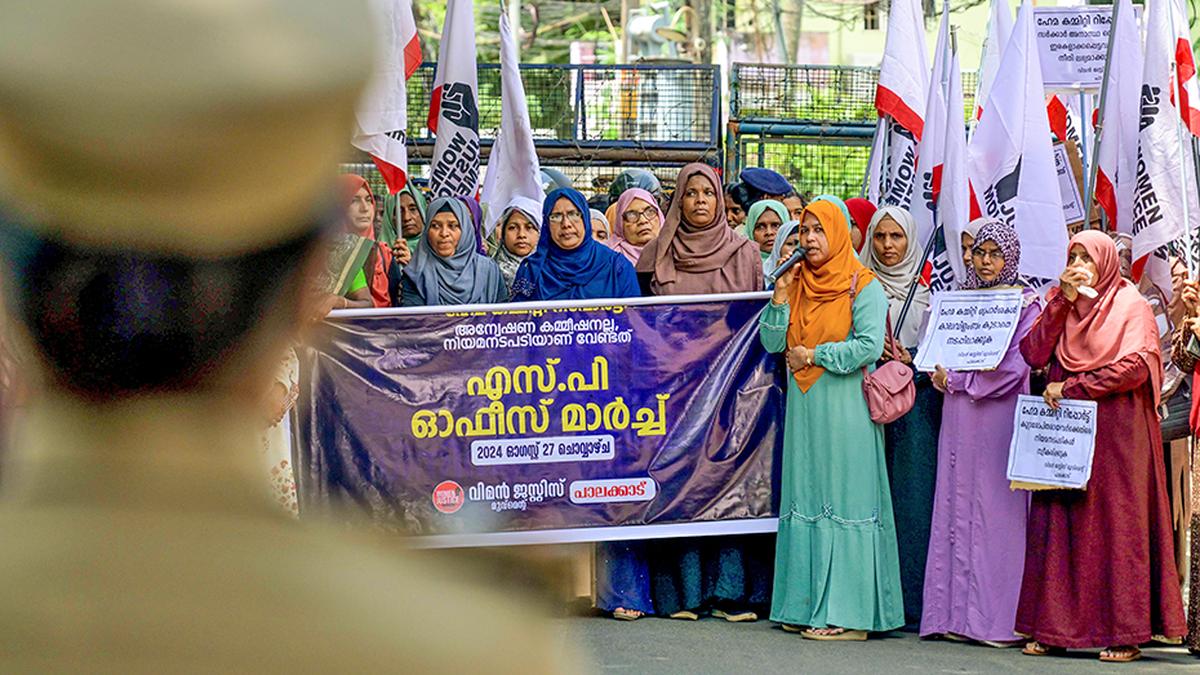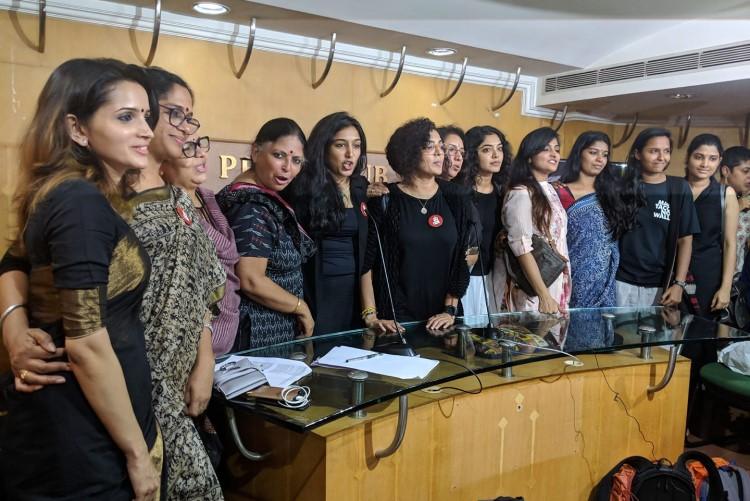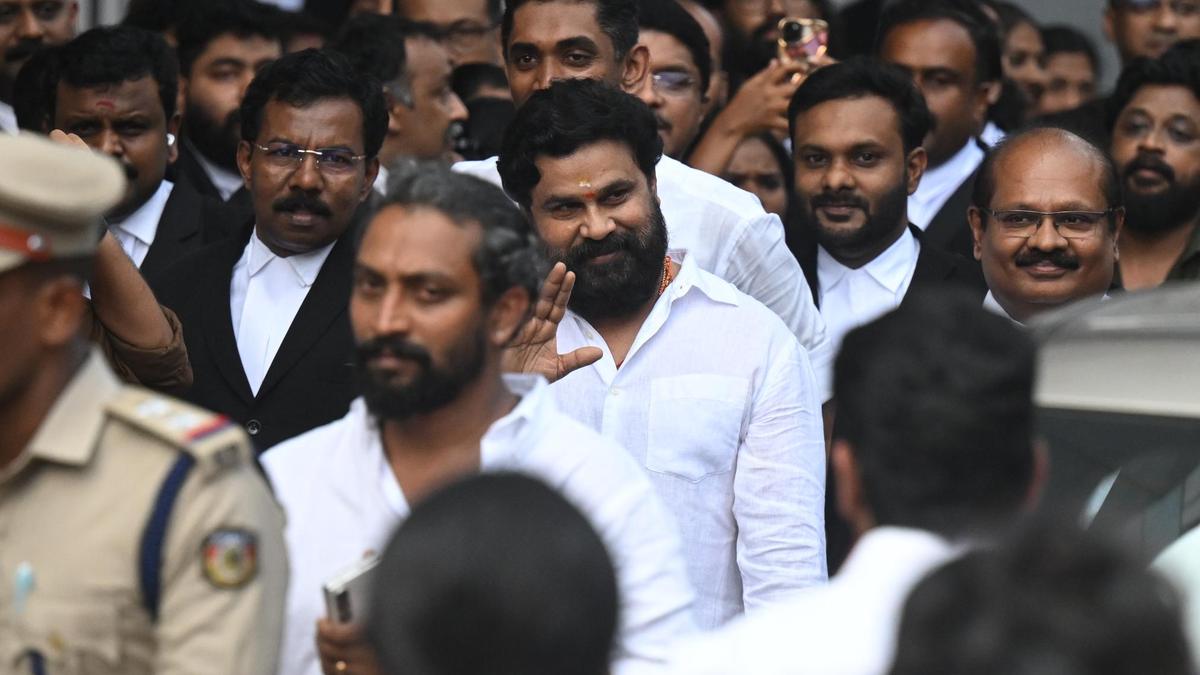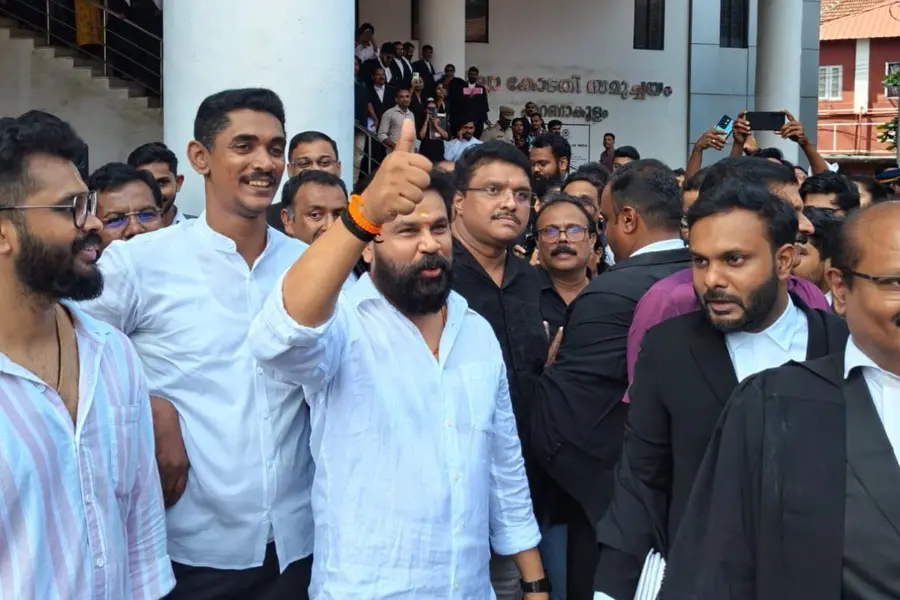The most commonly asked question, every time a victim of sexual violence publicly narrates their account of the crime or decides to report it after some time has passed since the incident, is why, if their accusations are true, did they not report the crime to the police as soon as it happened? When women don’t report sexual violence, the social perception is that they must be lying and crafting a narrative to further ulterior motives. Although, when women report sexual violence and speak up about it, we are quickly reminded why many victims may choose silence. The Hema Committee Report brought the culture of silence around sexual violence to the public eye. Ten months after its release, the cases of sexual assault based on the findings of the report have been dropped.

The Kerala police have decided to no longer pursue any of the cases where chargesheets have not yet been filed, claiming there has been no headway in their investigations so far. Non-cooperation from survivors and their lack of desire to pursue legal remedies were suggested as reasons for the inquiry stalling. The police, in early June, filed Further Action Dropped (FAD) reports in thirty-five such cases. However, cases where chargesheets have already been filed remain active.
The Hema Committee fallout: charges dropped; survivors let down
Underreporting of sexual violence is a problem for which society and institutions must be held accountable, not victims. Immediately reporting sexual violence is often the social – and sometimes institutional – benchmark used to determine the veracity of victim accounts and even the truthfulness of the allegations in their entirety. However, reporting sexual violence in India requires navigating a complex, traumatising, and isolating social and institutional infrastructure that doesn’t even guarantee justice in the end. Reporting sexual crimes is a punishing process, and our social and legal institutions often punish victims to a far greater degree than perpetrators.
The staggering figures of underreporting in India
A myriad of social and institutional barriers lies at the heart of underreporting. The average number of rapes recorded each year between 2010 and 2022 is 31,084. That is nearly 85 rape cases each day. While these numbers themselves are alarming, India has an underreporting problem, and a severe one at that, so they do not accurately represent the extent of sexual violence occurring in the country. Examining data from the National Family Health Survey (NFHS-5), LiveMint estimated that 99.1 per cent of rape cases go unreported. Even if marital rape is excluded from the calculation, still a staggering 85.2 per cent of cases aren’t reported.
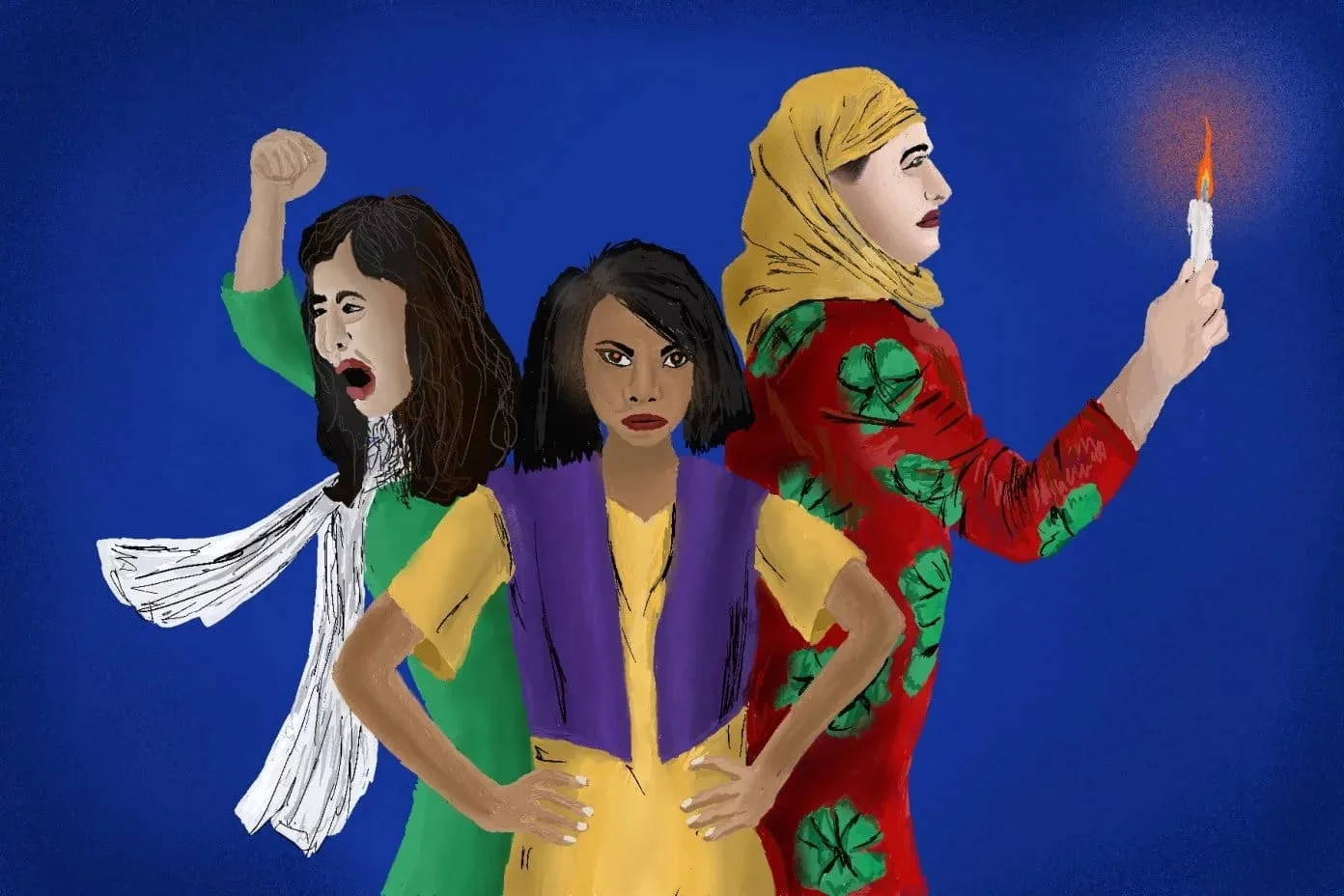
However, even these figures may not capture the entirety of the problem. The report cautions that real rates of underreporting might be even higher because the NFHS data it is based on only contains information regarding sexual violence committed against women aged 15 to 49, and even among that age group, NFHS figures can potentially be erroneous. A complex interplay of social and institutional factors disincentivises reporting. Merely encouraging victims to come forward and viewing the failure to report sexual violence as a moral failure is not only futile, but it also places the burden on victims to remedy a deep-rooted socio-institutional failure.
Women are conditioned in patriarchal societies to internalise blame and shame for the violence committed against them. In the patriarchal imagination, sexual violence is often mischaracterised as a crime motivated by sexual gratification, instead of violence motivated by the desire for power and control. Conflating sexual violence with sex makes sexual assault a threat to the patriarchal idea of family ‘honour’, given the patriarchy’s preoccupation with the ‘purity’ of women and control over their sexuality.
Blame, shame, and silence
The responsibility for preventing sexual violence is then displaced onto victims, instead of being placed on perpetrators and society, culture, and institutions. The idea that women invite or provoke sexual violence, and can, therefore, prevent it, makes reporting violence or speaking up about it an ordeal dotted with shaming and blame. Elucidating on this, Nitya Sethi, a Hyderabad-based psychologist, says, ‘In my clinical experience, especially working within socio-cultural contexts shaped by patriarchy, shame often becomes internalised and deeply entangled with identity and worth. Many survivors of sexual violence express intense self-blame, not necessarily because they believe they are at fault, but because they’ve absorbed societal messaging that suggests they are.’
‘Victim-blaming attitudes not only delegitimise their trauma but actively discourage victims from speaking up. Reporting sexual violence then becomes a psychological and social risk: survivors often fear being judged more harshly than the perpetrator.’
Speaking of the deterrent effect victim-blaming has on reporting, Sethi added, ‘Victim-blaming attitudes not only delegitimise their trauma but actively discourage victims from speaking up. Reporting sexual violence then becomes a psychological and social risk: survivors often fear being judged more harshly than the perpetrator.’
This isn’t just anecdotal; research also supports this. According to a study (Ullman [2010]), perceived social reactions, including blame and disbelief, were associated with greater PTSD symptoms in survivors and significantly lower likelihoods of disclosure and help-seeking. Similarly, a 2020 study in the Journal of Interpersonal Violence noted that societal stigma around sexual assault was a major barrier to reporting, particularly in conservative or patriarchal cultures.
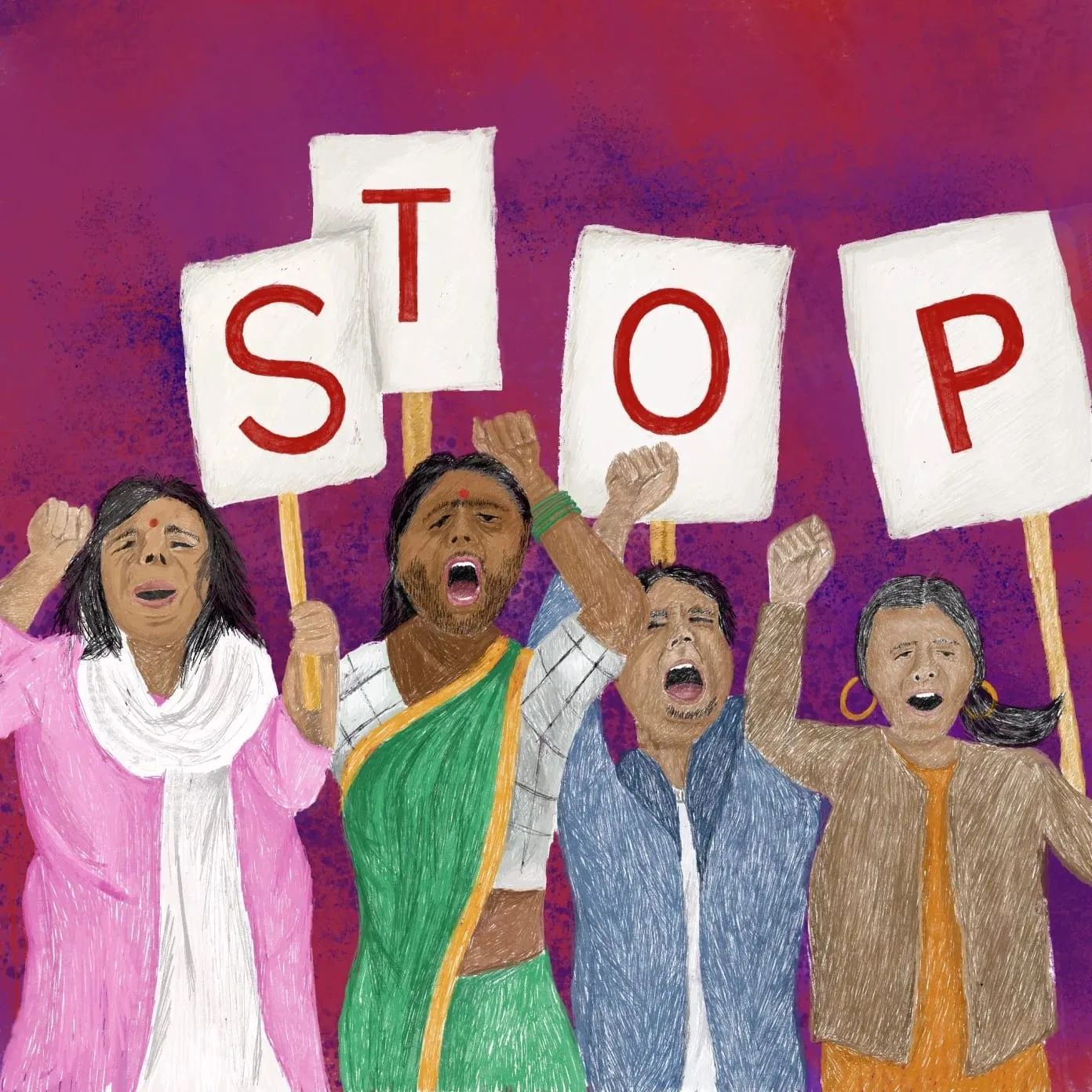
However, when victims report sexual violence, they are still subjected to hostility, suspicion, and callousness. Victims are then confronted with a catch-22: they face social distrust when they choose not to report and social stigma if they do. The pervasive patriarchal idea that sexual violence is women’s fault translates in practice to victims being punished by means of social ostracisation and social exclusion for reporting.
Suzzette Jordan, the survivor of the Park Street rape case, was denied entry to a restaurant for being “the Park Street victim”. In another instance, the mother of a minor rape victim was asked to vacate their rental home following her decision to report the crime. Another minor rape victim was forced to relocate to a different town due to social hostility and the reluctance of schools to admit her. These are only a handful of instances and do not begin to cover the breadth and depth of the issue.
If disbelief ends at reporting, stigma only begins. Speaking of the effect of such stigma on reporting, Sethi says, ‘When disclosure becomes synonymous with life-altering socio-economic losses, it’s entirely understandable, though deeply tragic, that many choose silence. From a trauma-informed perspective, this silence isn’t weakness; it’s often an act of survival in an environment that hasn’t earned their trust.’
Courtroom misogyny and police apathy
The process of pursuing legal action in cases of sexual violence, from filing an FIR to a conviction, can take years. The very case of sexual violence against Malayalam actor Bhavana that eventually led to the formation of the Hema Committee is a testament to this. While the trial is ongoing, the accused in the case, fellow actor Dileep, has continued to be out on conditional bail since 2017. He continues to work, making several films a year.
Questioning of victims within courts can also be extremely insensitive and take on victim-blaming and slut-shaming tones. Previous sexual history, clothing, demeanour, and the general disposition of victims are weaponised against them.
Police apathy, insensitive and outdated methods of medical examinations, courtroom misogyny, and an endless process of appeals create numerous institutional barriers that victims have to navigate while reporting sexual assault. Low conviction rates also share responsibility for low levels of reporting. The last available NCRB data puts conviction rates at a pitiful 2.56 per cent. This means that victims can report sexual violence, risking social stigma and economic marginalisation, and navigate a complex, time-consuming, and insensitive legal system, only for it to all lead to the acquittal of the perpetrator after an extremely long-drawn-out and draining process.
Questioning of victims within courts can also be extremely insensitive and take on victim-blaming and slut-shaming tones. Previous sexual history, clothing, demeanour, and the general disposition of victims are weaponised against them. Until 2003, such invasive questioning was allowed by means of codified law. Until it was finally repealed in 2003, Section 155(4) of the Indian Evidence Act, 1872, allowed lawyers for the defendant to ask such questions during the cross-examination of the victim that enabled them to show that the ‘prosecutrix was of generally immoral character’. However, despite the repeal of the section, there has been no remarkable change in the victim-blaming undertones of court proceedings. Instances of even judges displacing blame onto victims, making inappropriate remarks, and being rape apologists are not unheard of.
A system that fails rape survivors
However, before cases ever reach courts, registering an FIR and being subjected to a medical examination can be traumatising and highly invasive ordeals. Police investigations and questioning can often take on a sacrosanct and judgmental tone, essentially judging the merit of the complaint based on judgment of the victim (and often their social identity) instead of simply filing a report and investigating. Patriarchal attitudes among police personnel make taking the very first step towards reporting a challenge.
Even medical examinations following a sexual assault are often the product of the same patriarchal attitudes and biases. Until 2013, the two-finger test was always employed during these exams, a test where medical practitioners used their fingers to check for the condition of the hymen.
A study of police responses to rape in metropolitan settings in India found that it wasn’t uncommon for misogyny against women who don’t adhere to patriarchal norms to shape police perception that they are party to the crime, and this consequently, resulted in poor handling of investigations and the prima facie classification of victims as good and bad and cases as genuine and false.
Police practices surrounding sexual violence investigations were also found not to adhere closely to prescribed law, with a gulf between de facto and de jure police practices. It also found stereotyping and bias against socio-economically marginalised victims to be worse, with considerable bias against people based on their gender, caste, and class position.
Traumatic medical exams rooted in misogyny
Even medical examinations following a sexual assault are often the product of the same patriarchal attitudes and biases. Until 2013, the two-finger test was always employed during these exams, a test where medical practitioners used their fingers to check for the condition of the hymen. While the test had no basis in science or any relevance in proving or disproving allegations of sexual violence, it was still widely practised because it was a product of the patriarchal obsession with virginity and was essentially a pseudo-scientific way to determine if victims had engaged in sexual activity in the past, and if so, whether they deserved justice and should even be believed.
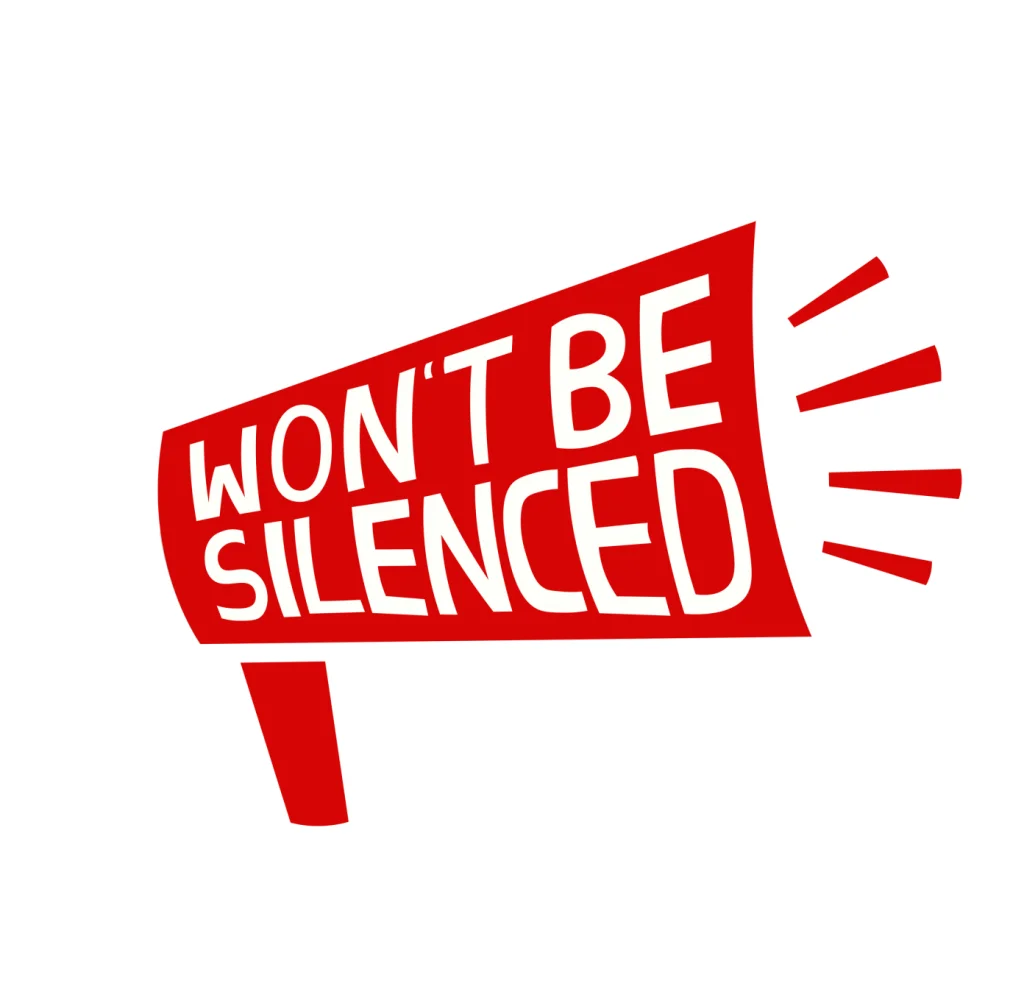
In 2022, the Supreme Court reiterated that the test cannot be conducted, and disciplinary action will be taken against anyone who does. However, dotted with apathy, disregard, and internalised misogyny, the process of medical examinations can be humiliating and traumatising for victims, even with the two-finger test falling out of practice.
Beyond these socio-institutional barriers, the very real possibility of retaliatory violence that victims face from perpetrators also greatly influences underreporting. The nature of the challenges victims face in reporting sexual violence makes underreporting an issue firmly rooted in patriarchal frameworks influencing socio-institutional attitudes towards sexual violence. While it is malicious and misogynistic to say victims don’t report sexual violence because they are lying, it would also be in bad faith to simply say the solution to underreporting is for victims to simply come forward.
There are complex socio-economic and institutional forces at play that discourage and disincentivise reporting, forces much larger than any individual victim. Reporting sexual violence comes with incredible costs, including social isolation and ridicule, threats to economic well-being, institutional discrimination and hostility, and psychological harm. To increase reporting of sexual violence, we must not demand more of victims, but reckon with the fact that patriarchy influences how every social and legal institution operates in this country. This patriarchal death grip must be challenged and dismantled if we are to address the staggering extent of underreporting.
About the author(s)
